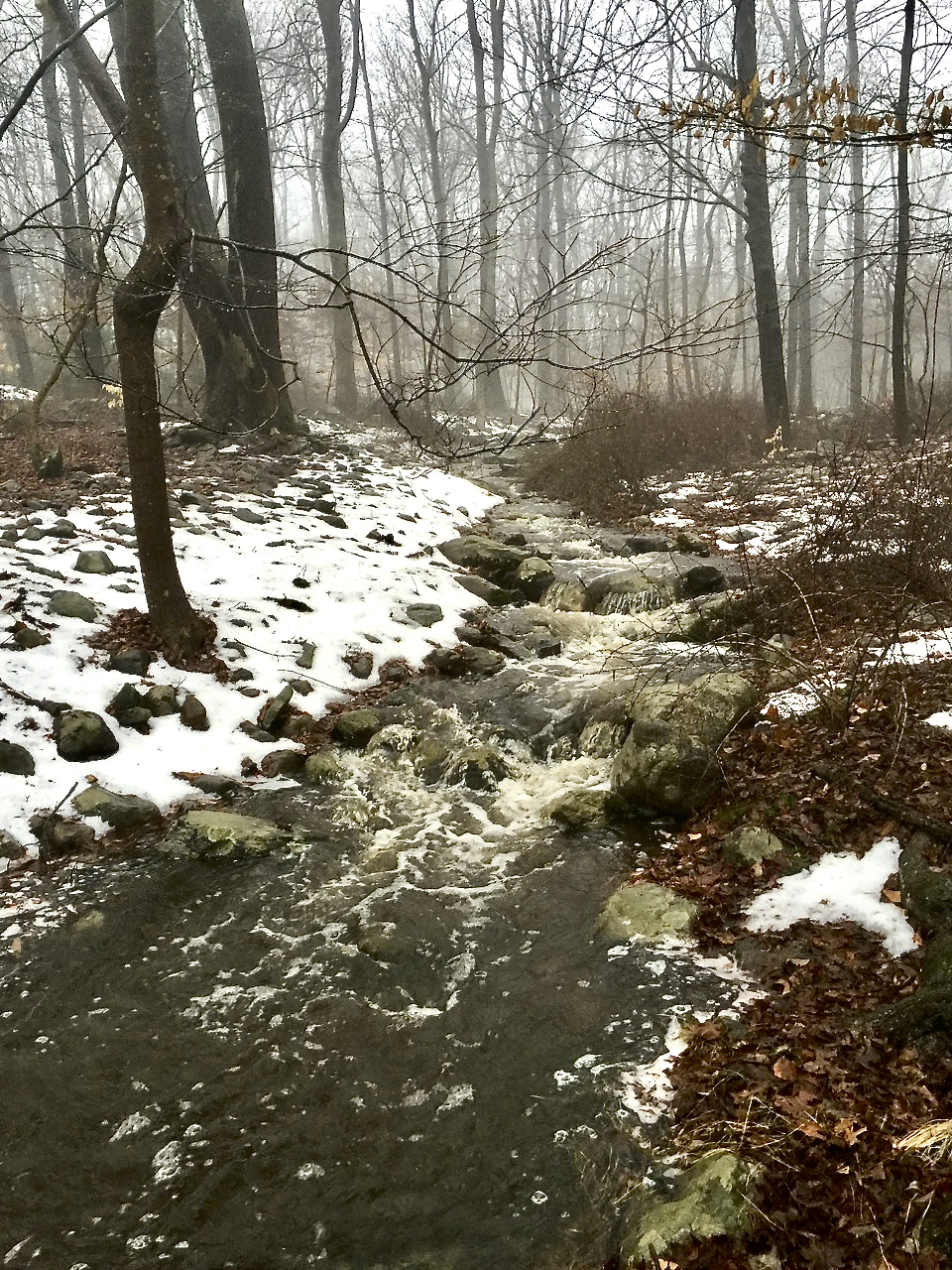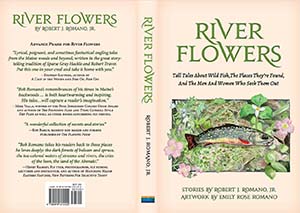February Thaw
 As I grow older the winters seem to last longer. With the temperature rising into the forties on this first week of February, I tramp through melting snow in my Sorrels, the hood of a sweatshirt pulled tight over the tattered bill of my baseball cap. While collecting an armful of billets, I hear the patter of water dripping off the roof of the lean-to located across the drive from the back door of our home.
As I grow older the winters seem to last longer. With the temperature rising into the forties on this first week of February, I tramp through melting snow in my Sorrels, the hood of a sweatshirt pulled tight over the tattered bill of my baseball cap. While collecting an armful of billets, I hear the patter of water dripping off the roof of the lean-to located across the drive from the back door of our home.
After stacking the billets beside the woodstove, I gather my sunglasses, pack, and reel from the four corners of the house. The tube that contains my bamboo rod is where I placed it more than two months ago, leaning in a corner by the door. I check twice to be sure nothing is left behind before climbing into my truck.
It’s past noon by the time I pull into a gravel lot where three cars are parked. As is my habit, I check each one, careful not to appear too suspicious should the park ranger amble by. I’m pleased not to find any TU stickers or vanity plates that might indicate the vehicles’ owners are anglers. After completing this essential piece of reconnaissance, I slip off the Sorrels and slide a pair of hippers over jeans.
Bonnie Brook appears foreign as I gaze across the snowscape. Gone is the lush grass under the few remaining apple trees scattered across an abandoned orchid between the lot and the stream. A large doe appears out of a line of hardwood trees along the far edge of the field. The tawny leaves of a nearby beech tree flutter in the breeze. After a moment, two yearlings follow the doe’s example.
My back rebels when I stretch down to lace my wading boots. The three deer raise their heads and then turn back into the tree line. It takes a few moments to remember how best to adjust the straps of the hippers through the loops of the jeans, but that done, I fix the reel to the butt end of the little cane rod.
After turning up the collar of a fleece pullover, I open a Sucrets tin taken from the breast pocket of my flannel shirt. Staring down at a haphazard assortment of patterns left over from last season, I choose a #14 pheasant-tail dry fly from the ripples of foam and knot it to a 5X tippet. The parachute wing will keep the fly afloat over the most turbulent of the little stream’s riffles, the calf-tail post making it easy for my waning vision to follow while the pheasant-tail barbules wrapped around the hook shank are sufficiently “buggy” to interest any fish that may consider rising from its winter doldrums to sample a tasty morsel floating innocently upon the surface.

Bob Romano’s newest book River Flowers is available now. Visit forgottentrout.com for ordering information.
After adjusting a forest-green watch cap over my ears, I tramp toward a section of stone row that has collapsed from the freeze and thaw of successive winters.
Climbing over the rockslide, I trudge through the field, my wading boots making prints in the soft snow. Unlike the trees in Munchkin Land, each fall the gnarled branches of those in this orchid give up their tart fruit without complaint. Rather than yellow bricks, I turn onto the snow-covered trail that parallels the stream. A white-throated sparrow peeps from among an unruly tangle of wild rose, grape, and barberry that separates the path from the stream. Finding an opening, I climb down to the water.
The current tumbles briskly through the ice that has formed along the edges of the stream. The stones are slick notwithstanding my felt soles. A chipmunk pokes a head out from between a row of boulders along the far bank. In the distance, I can hear the rapid hammering of a woodpecker.
The bamboo rod that has accompanied me over the last few years was built by Ron Barch. The former publisher of the Planning Form, an international newsletter dedicated to the construction of split bamboo fly rods, has been working with cane for more than thirty years. My rod is based upon a taper developed by Paul Young. Measuring six feet, three inches, it is the perfect tool to cast flies on this stream that is no more ten feet wide.
I cast the pheasant-tail into plunge pools, along the edge of tree trunks that have fallen into the stream, in front of and behind boulders, and over any water that looks “fishy”—all with no success.
Although the sun continues to shine, it provides little warmth as I work my way upstream. Cast, mend line, take a few steps forward, cast mend line, then do it again. I’d be better served changing to a nymph, one with a bit of weight to bring the fly down to the fish that continue to hug the bottom this time of year. But I’m more interested in gaining back my rhythm than chucking and ducking.
The sound of the current rises through the canopy of bare branches. Like old friends, parts of the stream rise up to greet me.
There’s the set of riffles falling down from between twin boulders where one summer morning a fat rainbow jumped three times before coming to my hand. Around the next bend, I find myself beside a quiet glide that slips under the roots of an old pin oak, home to a brown trout that threw my hook last fall.
A few hundred feet upstream, a number of smaller brook trout have, on occasion, grabbed my flies as they momentarily floated over the three plunge pools formed by the current that descends like a set of stairs before continuing downstream.
After a while, I come upon the dark run that sweeps across a fallen willow. A number of years back, on an overcast morning in early June, a large trout rose through the tree’s submerged branches to sip a tiny dry fly, the fish breaking me off before it could be identified.
Now, looking up to discover the sun has fallen below the tops of the trees, I turn toward the snow-covered bank. Trudging back down the path, my creel is heavy with memories, enough to sustain me until next time when a fish or two may be willing to come out and play.











